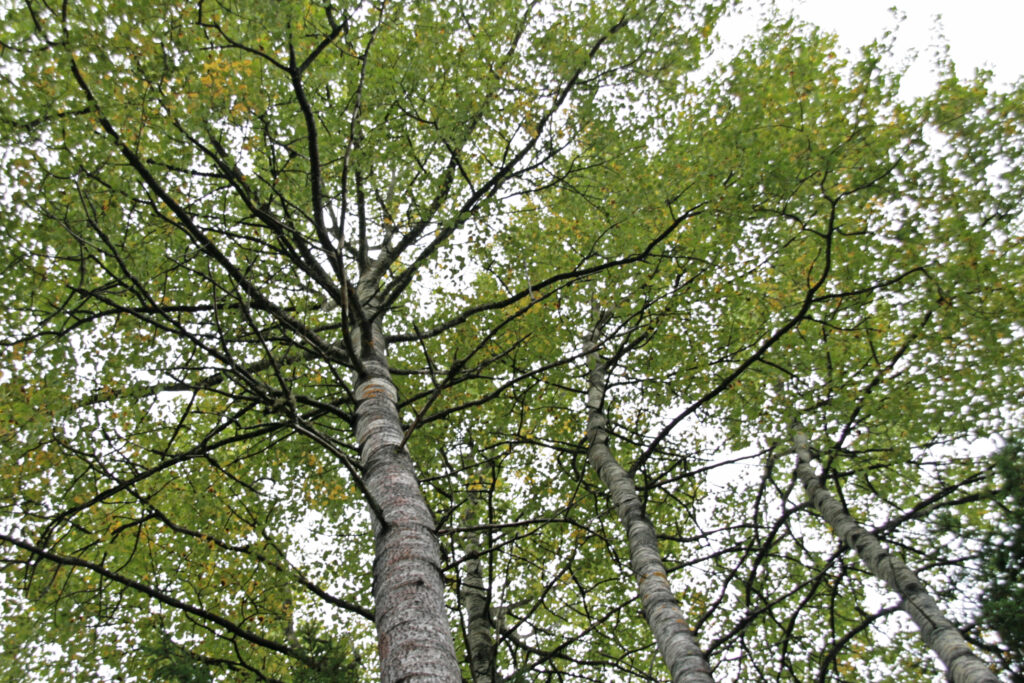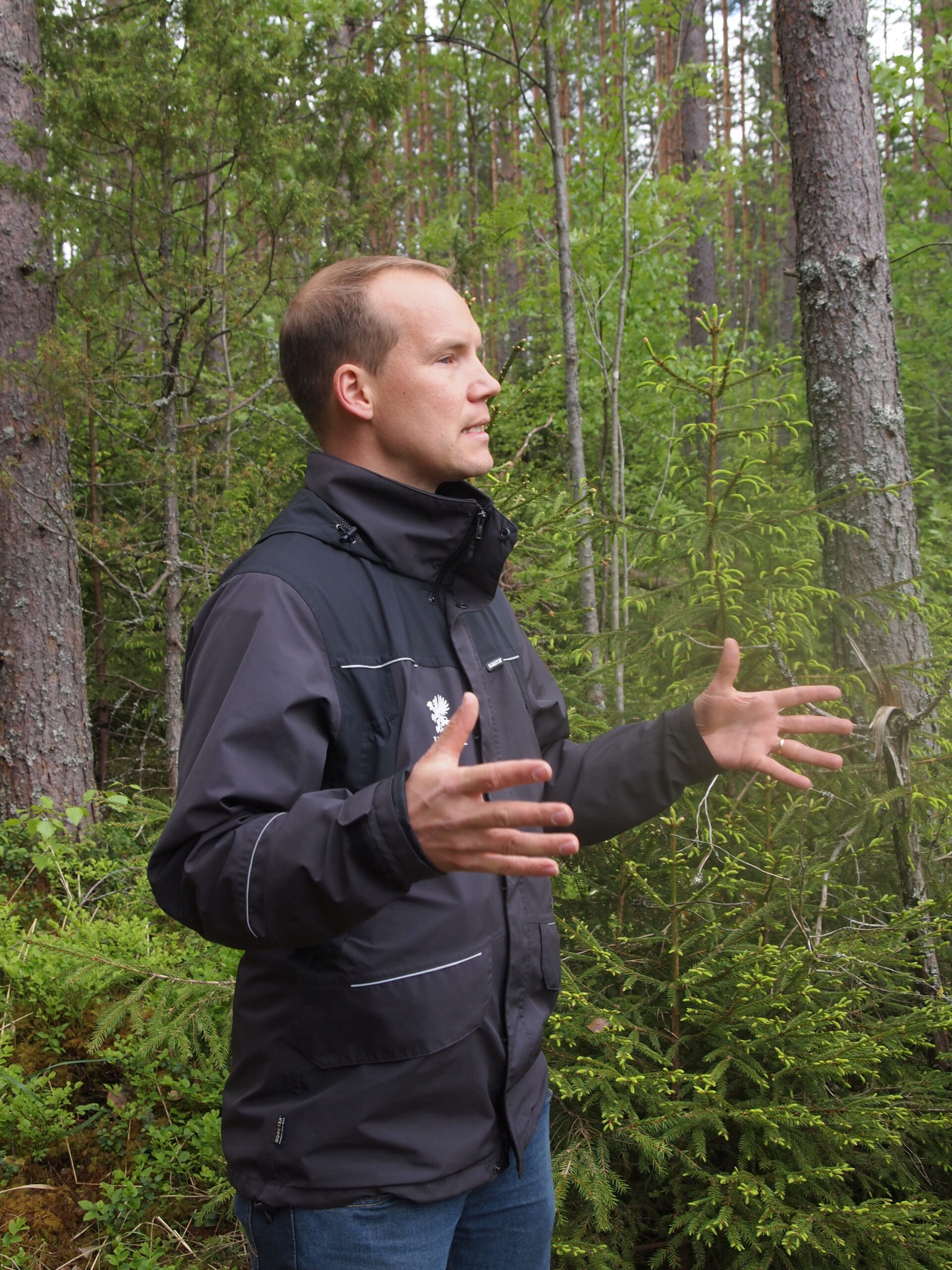Protection of flying squirrel to be relaxed

Not just one, but two new instructions are being drafted to protect the Siberian flying squirrel, but neither of them satisfies the forest owners. In addition, the Ministry of the Environment intends to discontinue defining the boundaries of the breeding grounds and resting places of the Siberian flying squirrel.
It could be hiding just there, in a hole in the sturdy aspen next to a dense spruce stand. The aspen leaves are a staple in the diet of the Siberian flying squirrel (Pteromys volans) and its nests are often found in aspens, in holes originally made by woodpeckers.
If this tree cavity is indeed a flying squirrel’s nest, it should be reported to the authorities. When the spruce stand is harvested, the Centre for Economic Development, Transport and the Environment (ELY Centre) will set the boundaries of a protection area around the nest and select which trees must be left standing so that the squirrel is able to travel from its nest.
The Ministry of the Environment is now about to relax the protection measures. It is preparing a proposal to discontinue the setting of boundaries for the breeding grounds and resting places of the Siberian flying squirrel. The reason for this is the lack of resources of the ELY Centres.
Mr Timo Tanninen, Director General of the Department of the Environment at the Ministry of the Environment, is not pleased with the cutbacks in the resources of ELY Centers. Tanninen points out that the scaling down of activity does not affect one species only, but has wider impact on conservation.
“The forest industry and forest owners will have an even greater responsibility and a bigger role in conservation in the future.”
“I’m worried. State investment in sustainable development and cooperation between actors will be reduced,” said Tanninen in a colloquium organized by the Finnish Forest Industries.
Tanninen notes that while investment in sustainable development is reduced, logging is increasing significantly.
“The forest industry and forest owners will have an even greater responsibility and a bigger role in conservation in the future,” he says.
Even if the boundaries of the Siberian flying squirrel’s breeding grounds and resting places are no longer defined, deteriorating and destroying the habitats will still be prohibited under the Nature Conservation Act.
MTK does not support guideline reform
The Central Union of Agricultural Producers and Forest Owners (MTK) has cautioned that responsibility for protecting the species should not fall on the landowners alone. Furthermore, it gives a thumbs-down to the revised guidelines for protecting the flying squirrel drafted by the Ministry of Environment and the Ministry of Agriculture and Forestry.
The ministries’ new guidelines have not yet entered into force due to possible changes in the procedure of setting the boundaries. Nevertheless, MTK has already expressed its support for the old guidelines. MTK estimates that according to the new manual, the protected area around the nest could be even ten times bigger than at the moment.

Mr. Sami Oksa, Environment Manager of forest industry company UPM, points out that forest certification alone has helped the flying squirrel in many ways.
“Forest certification has increased the number of broadleaf trees. Aspen is is a good example of a tree which is advantageous to both nature and forest management,” Oksa said at the event organized by the Finnish Forest Industries.
However, there are many true stories about cases where the favourite trees of flying squirrel are felled before all others. This ensures that the squirrel will not find appropriate nesting trees and the forest owner need not worry about protection measures when logging the forest.
Mr Risto Sulkava, Chairman of the Finnish Association for Nature Conservation (FANC), believes that everyone could win if forest management moved into what are called softer methods. Special regulations, demarcations and logging bans might not be needed if, for example, upper-layer thinnings would become more common. This would mean removing the largest trees and leaving the broadleaf trees.
Currently, the protection of the flying squirrel is inadequate, according to the Finnish Association for Nature Conservation. The association published its own guidelines for the protection of the flying squirrel immediately after the Ministry of the Environment had announced it will discontinue the setting of boundaries for the breeding grounds and resting places. In the FANC guidelines a territory with a 150-metre radius is defined around the nest.
Threatened species – Joint website of Finland’s environmental administration
Kirjoita kommentti